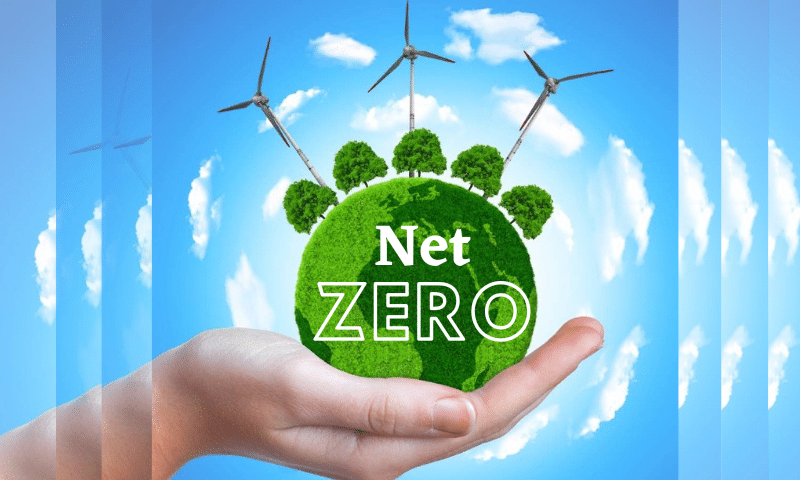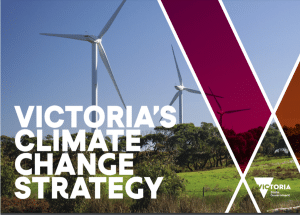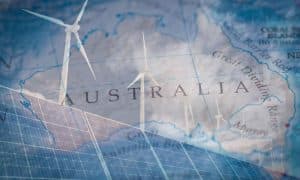The Australian Federal Government, along with a large portion of the rest of the globe, has committed to achieving net zero emissions by 2050 after significant hesitation on the issue of climate change. Almost all major economies have now enhanced their 2030 targets and committed to reducing their emissions by about 50% over the next ten years, including Australia’s net zero emissions target.. But what does net zero emissions mean?
Amidst the global push for net zero emissions by 2050 and heightened environmental awareness, understanding the significance of this goal is paramount. Achieving net zero involves balancing greenhouse gas emissions with removal efforts, a critical strategy in addressing climate change. As nations, including Australia, intensify their commitments to emission reductions, the role of renewable energy, particularly solar power, becomes pivotal. Getting FREE solar quotes from Energy Matters, can help you incorporater solar technology seamlessly into your efforts to contribute to a cleaner, greener future.
What does net zero emissions mean?
‘Net zero’ is achieved when all the greenhouse gases emitted by humans are either removed or offset. Think of it this way; the average car emits approximately 4,000kg of carbon into the atmosphere each year. To achieve ‘net zero’ for the vehicle, this 4,000kg must be offset yearly. This can be achieved by planting 15 trees yearly, as each tree captures approximately 270kg of carbon annually. Like a scale, balancing emissions (what you put in must equally be taken out) will achieve net zero.
For Australia to achieve net zero emissions, the total of all the greenhouse gases emitted by its citizens and industry must be offset.
Why is everyone talking about net zero emissions targets suddenly?
The recent report by the Intergovernmental Panel on Climate Change (IPCC) has been described as “Code Red” for humanity. This report highlights the need for net zero as rapidly as possible and sets a solid interim goal. Throughout the year, governments around the globe are now attempting to achieve a net zero target by creating their own net zero objectives. Many major Australian business partners have now agreed to a net zero emission target.
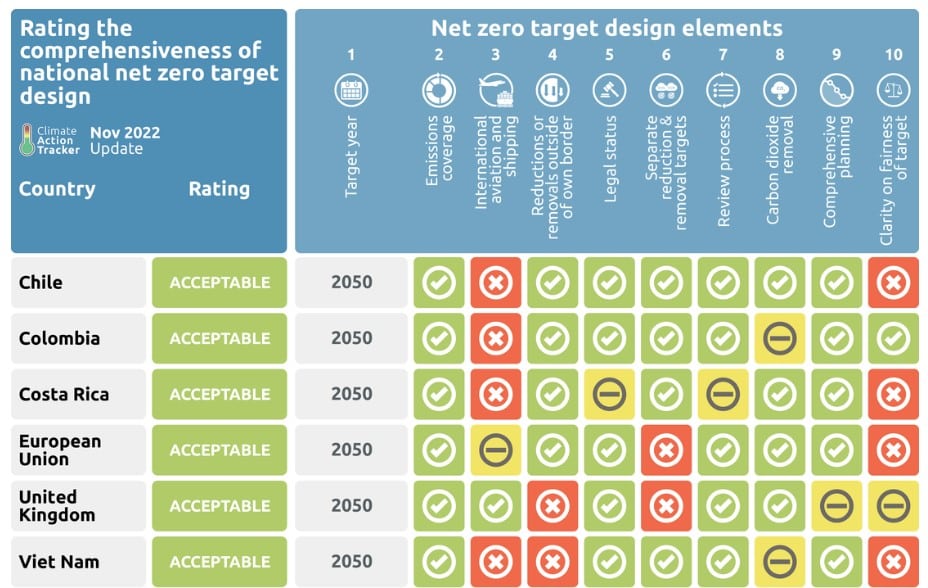
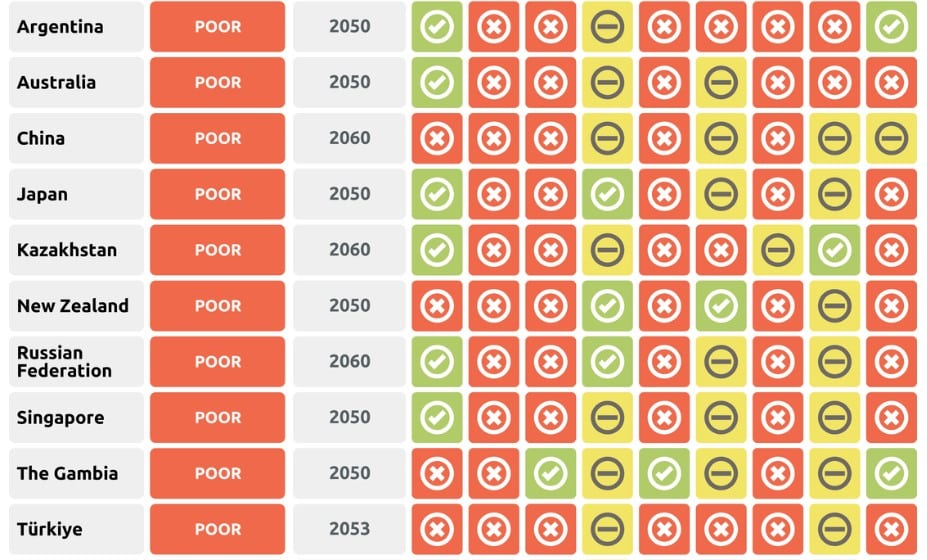
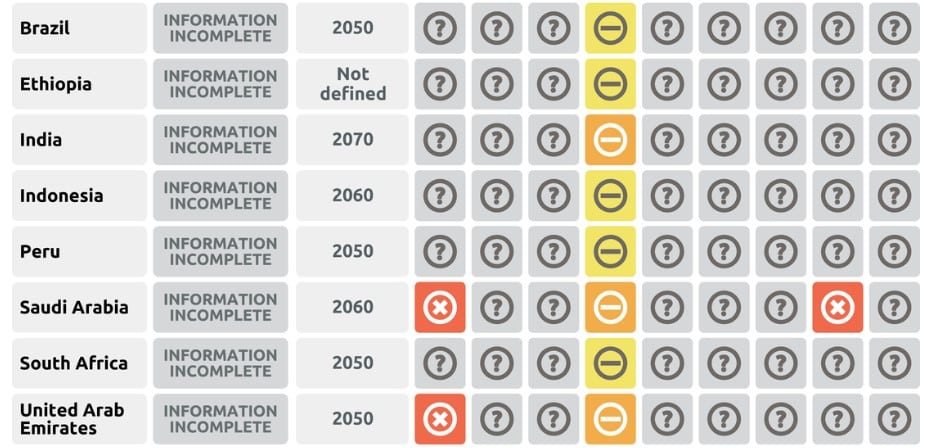

What is a net zero emission target?
Many countries agreed in the Paris Agreement to keep global warming “well below” 2° Celsius and to “make efforts” to keep it at 1.5° Celsius. The Intergovernmental Panel on Climate Change (IPCC) published a report on the 1.5° Celsius objective in October 2018. It concluded that global emissions must reach zero by the middle of the century for a realistic probability of keeping warming to 1.5° Celsius.
Recent research indicates that achieving net zero emissions by the following dates will be necessary to meet the Paris Agreement’s temperature goals, including the net zero emissions by 2050 target for Australia:
- In scenarios limiting warming to 1.5° Celsius, carbon dioxide (CO2) must reach net zero between 2044 and 2052, and total GHG emissions must reach zero between 2063 and 2068. Reaching net zero earlier in the range avoids temporarily overshooting 1.5° Celsius. Reaching the top of the range almost guarantees to surpass 1.5 degrees Celcius for some time before it eventually drops.
- In scenarios limiting warming to 2° Celsius, CO2 needs to reach net zero by 2070 (with a 66% likelihood of limiting warming to 2° Celsius) to 2085 (with a 50-66% likelihood). Total GHG emissions must reach net zero by the end of the century or beyond.
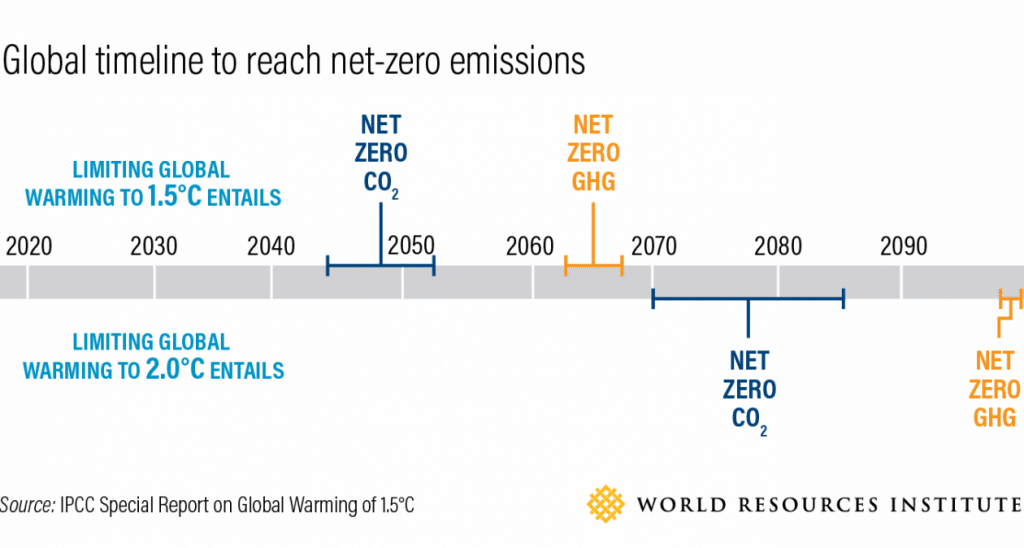
According to climate research, it is still possible to keep global warming to 1.5° Celsius (2.7 degrees Fahrenheit). However, greenhouse gas (GHG) emissions must decrease by half by 2030 and reach net zero by the middle of the century to prevent the worst effects of climate change.
A rapidly increasing number of national, local, and commercial leaders have taken action in response to this urgency by pledging to achieve net zero emissions within their organisations or jurisdictions. More than 80 nations, including the biggest polluters in the world, have announced such “net zero targets” (China, the United States, the European Union and India). Bhutan was the first country to set a net zero target in 2015.
Why is net zero emissions important?
We can only slow down anthropogenic climate change if fossil energy use is mitigated or ceased.
Carbon dioxide has been responsible for climate warming for many years. Reduced carbon emissions will help us reduce greenhouse gas emissions long-term. We should cut our greenhouse emissions by 2% AND begin working to repair past damage.
The technological alternatives are constrained in sectors like aviation, and it is doubtful that emissions will ever be zero in the agricultural industry. As a result, some emissions from these sectors will likely persist, and to balance them, we must remove CO2 from the atmosphere in an amount equal to those emissions – negative emissions. As a result, “net zero” becomes the aim for the economy as a whole. There is also the phrase “carbon neutrality.”

Negative emissions
Negative emissions play a crucial role in achieving net zero emissions. Carbon dioxide is the only GHG that can be readily removed from the atmosphere. There are two main ways to extract it: by encouraging nature to absorb more and by developing technology that accomplishes the job.
Through photosynthesis, plants take in CO2 as they expand. With everything else, more plants will remove more carbon dioxide from the atmosphere. Increasing forest cover and replanting are two of the simplest and most successful methods for reducing emissions (replacing forest that has been lost or thinned). Technical alternatives include direct air capture and Bioenergy with Carbon Capture and Storage (BECCS).
How can Australia achieve net zero emissions?
The technology is now available to accelerate the transition toward net zero emissions by replacing fossil fuels with clean, renewable, reliable energy backed by battery storage. Australians can access renewable energy sources in an unmatched manner and create clean jobs.
Energy Matters has been a leader in the renewable energy industry since 2005 and has helped over 40,000 Australian households in their journey to energy independence.
Let us discuss and choose the best quote that suits your needs and budget, and we can connect you with our trusted local installers, who will provide up to 3 FREE quotes for your home and business solar energy system. Get your free quotes today!
To reach net zero emissions by 2050, the Australian government unveiled its Long Term Emissions Reduction Plan.
The plan seeks to achieve a net zero economy through a technology-based strategy while safeguarding pertinent sectors, geographic areas, and employment opportunities. It is a component of a comprehensive plan for reducing emissions based on a technology-led strategy and has Low Emissions Technology Statements and a Technology Investment Roadmap.
The plan’s fundamental principles are:
- Will impose no new taxes since doing so would be a regressive system that burdens citizens. Technology will take the lead in the transition.
- Choices for consumers will increase.
- Green energy technology will become less expensive.
- Energy costs will remain reasonable, and reliable energy supplies will be available.
- The transition will be accountable and transparent.
The plan is heavily tech-focused. The plan’s cornerstone, the Technology Investment Roadmap, prioritises technology that will assist Australia in reducing emissions while boosting employment and our economy.
The plan outlines how the government will:
- drive down the cost of low emissions technologies
- deploy these technologies at scale
- help our regional industries and communities seize economic opportunities in new and traditional markets
- work with other countries on the technologies needed to decarbonise the world’s economy.
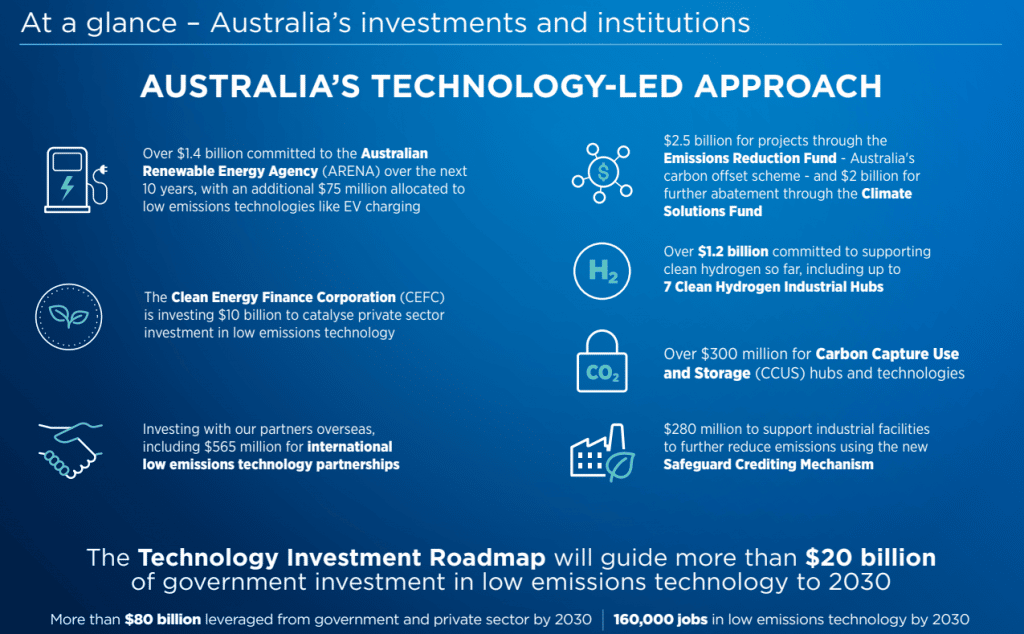
Source&Image: Australian Government
Under the Technology Investment Roadmap, the Australian government, will invest AUD 20 billion in low-emission technologies over the next ten years. It will spur corporate and public spending on green technologies. Five-year evaluations will evaluate the Plan’s development and technological innovation.
Still can’t afford to switch to solar power? Are you considering getting solar panels but are currently short on funds? You can still invest wisely, and Energy Matters can help you.
Powow and Energy Matters have teamed up to provide consumers with an alternative to switching to solar power and battery storage.
The biggest obstacle to installing solar and battery storage is typically finance. With Powow’s PPA and VPP, our customers will have a $0 upfront option and financial stability in the uncertain energy market.
Get up to 3 obligation-free quotes by getting in touch with us right away. Find out what payment plan options suit your needs and budget!
Check out our page for Powow: Power Purchase Agreement (PPA) and Virtual Power Plant (VPP).











